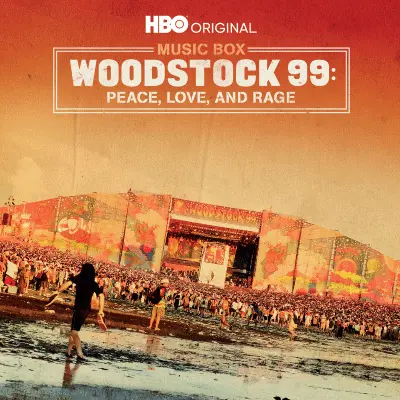HBO’s Woodstock 99: Peace, Love, and Rage jettisons valuable context to come to the wrong conclusions
-

Looking through "TRL blinders," the first in Bill Simmons' Music Box documentary series blames the disastrous Woodstock '99 music festival to a confluence of factors unique to 1999," says Craig Jenkins. Problem is, the disastrous aspects of Woodstock '99 keep happening on a smaller scale over and over again. Jenkins adds of Woodstock 99, "There’s no word on the family-values politics that would turn the 2000s into a culture war pitting offended, letter-writing conservatives against edgy anti-PC bros. There’s no mention of heated discourse through the ’90s about medicating unruly teens, no window into the reasons the generation of youth that populated Woodstock ’99’s audience would be drawn to darkness. We are told that weird and angry rock music showed up one day yucking everyone’s yum. We see Kid Rock and Fred Durst, the least eloquent mouthpieces you could even find at that time, revolting against nothing, and implications that this music fomented violence even as the doc says it was unwise to blame 1999’s Columbine shooting on the music the killers liked. Two decades after landmark albums like System’s Toxicity, Slipknot’s Iowa, and Deftones’ White Pony, an endeavor like this could have taken the opportunity to give the era the fair reassessment it never got when it topped charts. The closest we get is the minute they let the intro to Korn’s 'Blind' rip. The thing is, only four nu metal bands played Woodstock ’99. (Twice as many jam bands were present!) And concurrent tours with lineups more firmly rooted in the angrier stuff didn’t suffer similar fates. In 2000, Metallica’s Summer Sanitarium Tour, which Korn and Kid Rock opened, did not burn, and neither did the 1999 Family Values Tour, where Korn and Limp Bizkit were joined by Staind, another band that reckoned loudly with emotional pain (before singer Aaron Lewis became a chud). Ozzfest ’99 — where Ozzy Osbourne brought Slipknot, System, Deftones, Fear Factory, Hed PE, Static-X, and others to play amphitheaters across North America — is remembered as a game changer, one of the best lineups in the tour’s long history. In limiting its purview to (Michael) Lang’s festivals, Woodstock 99 jettisons valuable context. It doesn’t come up that Beastie Boys’ Ad Rock criticized the Woodstock ’99 promoters onstage at the VMAs the next month. We hear nothing about the problems more recent country-music festivals have had with drunken mischief and arrests, an issue that has come roaring back this summer along with venues reopening. Waves of death at EDM festivals in the 2010s go unmentioned. When Coachella is touted as the ethical alternative to the corporate shortsightedness forcing the riot that turned Woodstock ’99 into a historical tragedy, it is never mentioned that the Indio production has had its own well-documented struggles with sexual assault in its crowds. Woodstock 99 makes the events of that weekend in Rome, New York, seem like a confluence of horrors that could only have sprung from the climate of 1999, when in reality, we see a little of its hell every year. But the message of the documentary isn’t 'How do we make sure this never happens again?' It’s 'Look at these naked morons.' At the end, you don’t feel much closer to the reasons why music about hurt feelings and breaking things swept the youth of the turn of the millennium. Instead, Woodstock 99 feels drunk on chaos. It’s tempting with a story like this, with art that’s considered to be low and serving a demographic unafraid to indulge its worse impulses, to stand at a safe altitude looking down our noses at the debauchery, as if we’re above it now."
ALSO:
- Woodstock 99 feels cruel for showing naked women without blurring their faces: "The film does acknowledge that one of the festival’s more enduring legacies is of sexual assault: women were incessantly harassed, groped, and asked to show their t*ts," says Amanda Petrusich. "While the film is plainly critical of this—how could it not be?—it also doesn’t bother to blur the faces of the girls who are shown topless or being grabbed by men. That decision (and the sheer relentlessness of this footage, which takes up a significant chunk of the film) feels cruel. It’s hard to convincingly defend women while simultaneously shaming and re-exposing them."
- Woodstock 99 offers a chilling demonstration of how greed, cultural rot, and the vagaries of crowd behavior can make a concert into a generation-defining thing for all the wrong reasons
TOPICS: Woodstock 99: Peace, Love, and Rage, HBO, Music Box, Documentaries
More Woodstock 99: Peace, Love, and Rage on Primetimer:- HBO teases Bill Simmons' Music Box documentary series
- HBO's Woodstock 99: Peace, Love, and Rage offers a serious interrogation of a worthy but forgotten cultural moment
- Watch HBO's trailer for Woodstock 99: Peace, Love, and Rage
- Netflix developing a docuseries on the disastrous Woodstock '99 music festival
